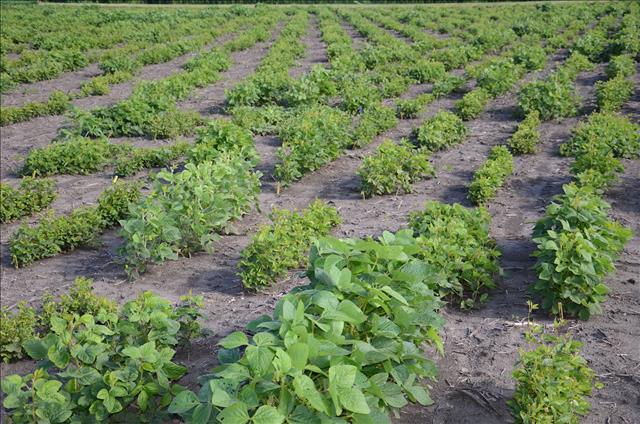
Plant breeding has always been a game of numbers – look at as many variations as possible until you find the right parent or parents that will result in a combination that brings something unique to the market that didn't exist before.
Related: Purdue's futuristic soybean center now under construction
Maybe it is a hybrid or variety that yield better, maybe it has resistance to a pest that is superior to anything before and still yields well, maybe it is something else-it's numbers and notes. For decades the notes were scribblings in a notebook based on visual observations.
That still happens today, but molecular markers help reduce the numbers and speed up the selection process. Purdue University's Marshall Martin, Director of the Purdue Soybean Center, believes that what evolves from Purdue's new Phenotyping Center and plant initiative program may be a giant step-wise change even from what commercial plant breeders do today.
Why? Because sensory images and perhaps even sensors are going to produce a mind-boggling amount of information about any plant or plants that an agronomist, researcher or plant breeder wants to look at.
The amount of information generated will be so large that Purdue will have a fiber-optic connection from the new Phenotyping center at the Purdue Agronomic Center to the most powerful computers on the Purdue campus. Agronomists and researchers and plant breeders working on projects will have access to summaries of this data.
The Phenotyping center is set to officially open early next summer. Preparation is underway to step up the capture of information on crops planted in '16 on the farm- not only in crop fields but in research and breeding plots of all descriptions.
Martin acknowledged that it is a learning process. Exactly how useful the information will be is yet to be determined, because it has rarely, if ever, yet been done anywhere in the world to this level.
Related: Purdue Plant Technology Center ready to grow at Agronomy Research Center
The Purdue Agronomy Farm, as it was once called, is about to become one of the most carefully monitored, carefully watched and carefully scrutinized places on the planet. If that doesn't get you excited, you're not really into raising corn, soybeans and/or wheat!
Coupled with new methods of mapping genomes and other genetic breakthroughs, Martin and others believe this new information will become invaluable to those working with plants. The goal is for this new type of information collection to become a model for anyone doing intensive work with plants in the future.
Look for more on the opening of the Center coming soon.
About the Author(s)
You May Also Like




